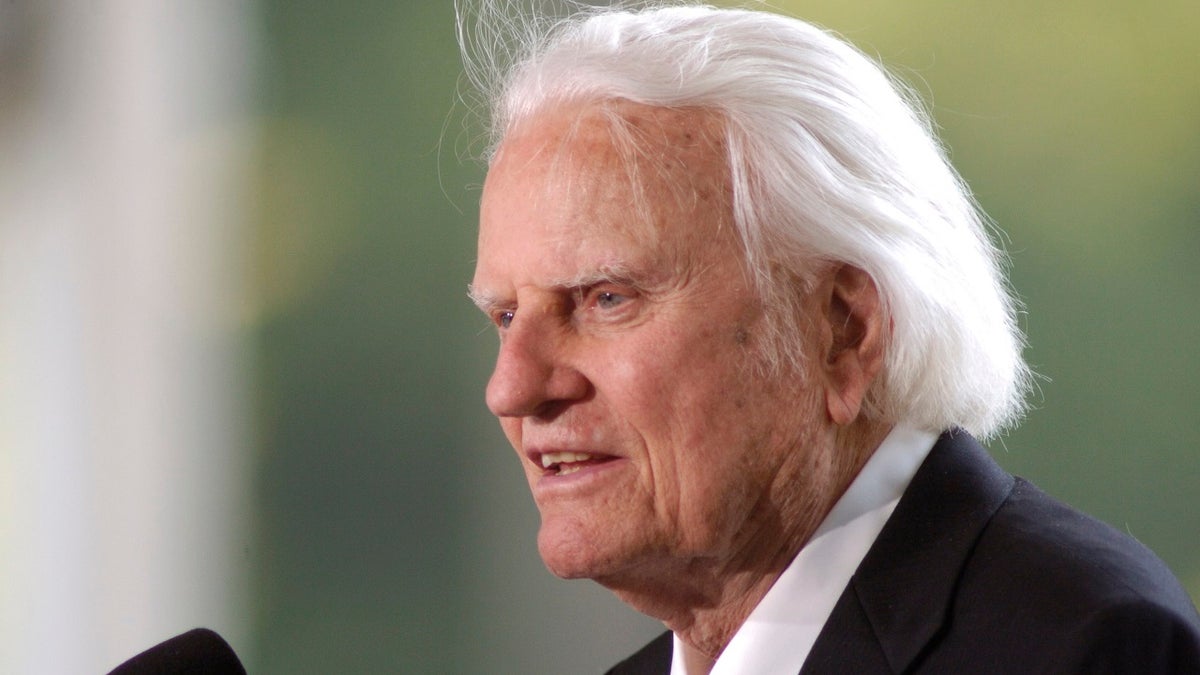
Evangelist Billy Graham speaks at the dedication of the Billy Graham Library in Charlotte, N.C., May 31, 2007. (Reuters)
As the body of the Rev. Billy Graham lies in honor in the U.S. Capitol Rotunda before his burial Friday in his native North Carolina, some lawmakers back home were working on a more permanent tribute to the man who was known as "America's Pastor."
Those lawmakers and Gov. Roy Cooper were taking steps to have a statue of Graham placed inside the Capitol, a report said Wednesday.
Each state gets to place two statues inside the Capitol, but those honored must be deceased. Lawmakers passed legislation in 2015 calling for a statue of Graham to replace that of Charles Aycock, a former North Carolina governor, the Raleigh News & Observer reported.
NC BILL SEEKS BILLY GRAHAM STATUE AT US CAPITOL
Graham, a Charlotte-born evangelist who was known to millions around the world, died Feb. 21 at age 99. During his career that spanned over six decades, he gave spiritual advice to American presidents and other world leaders.
About a week after his death, Cooper took the next step.
“I ask the Joint Committee on the Library of Congress to approve the State of North Carolina’s request to replace the statue of Governor Charles B. Aycock in the Statuary Hall Section, and to provide a new statue of the late Reverend William Franklin 'Billy' Graham, Jr.,” Cooper wrote in a formal letter to the committee.
The next step in the 10-step process is a formal request to the Architect of the Capitol, which Lt. Gov. Dan Forest sent on Tuesday, the report said, and the Joint Committee on Library Action to accept or deny the request.
If approved, a statue of Graham would replace that of Aycock, a Democratic governor from 1901 to 1905 who was a segregationist and white supremacist.
BILLY GRAHAM HONORED AT US CAPITOL CEREMONY
In 2003, Congress passed a law allowing states to replace their statues, the report said. Several states have since added contemporary figures such as Presidents Dwight Eisenhower and Gerald Ford, and Helen Keller, an advocate for the blind and deaf.
The statues are placed across several areas in the Capitol, including National Statuary Hall, the Rotunda and the second-floor corridors of the House and Senate.
North Carolina’s second statue is of Zebulon B. Vance, a Confederate officer, two-time governor and U.S. senator.


